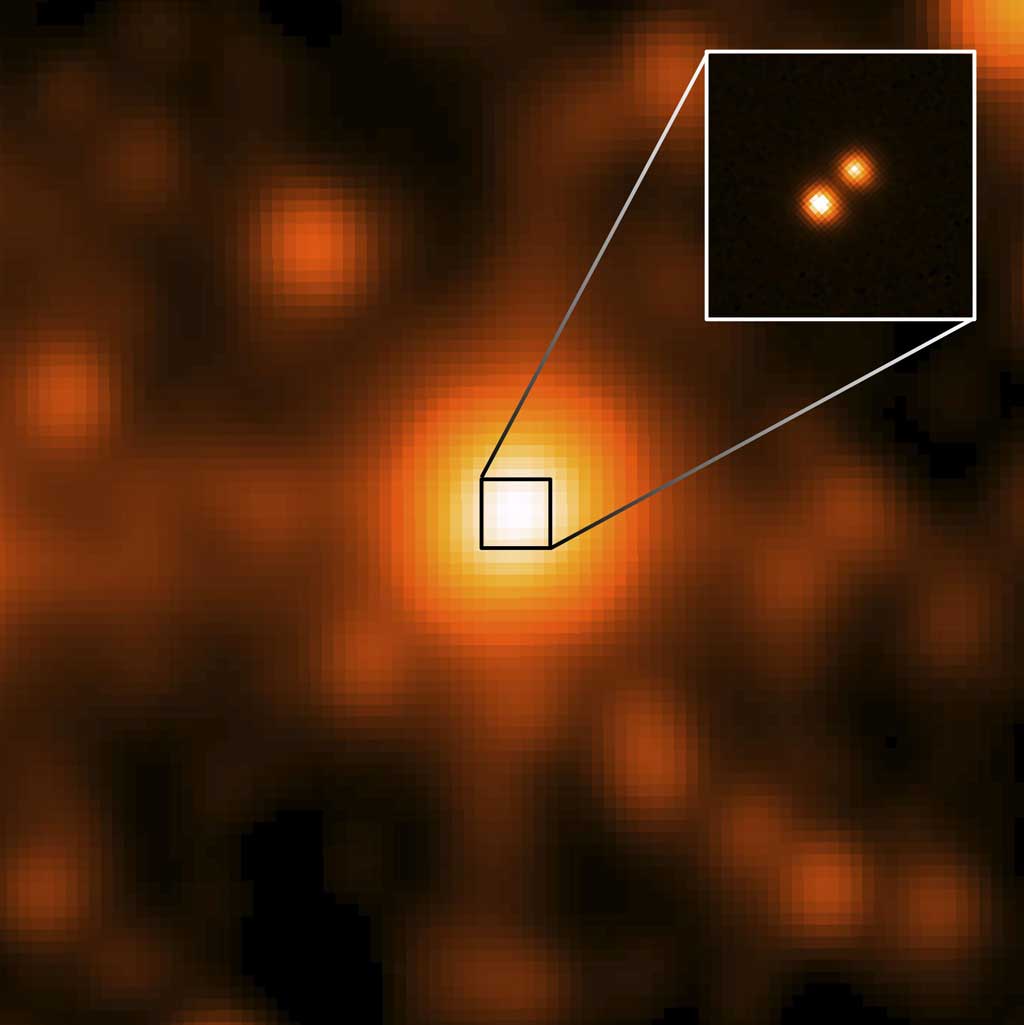Both stars in the new binary system are “brown dwarfs,” which are stars that are too small in mass to ever become hot enough to ignite hydrogen fusion. As a result, they are cool and dim, resembling giant planets like Jupiter more than bright stars like the Sun.
“The distance to this brown dwarf pair is 6.5 light-years — so close that Earth’s television transmissions from 2006 are now arriving there,” said Kevin Luhman from Penn State University, University Park. “It will be an excellent hunting ground for planets because the system is very close to Earth, which makes it a lot easier to see any planets orbiting either of the brown dwarfs.”
The star system is named WISE J104915.57-531906 because it was discovered in an infrared map of the entire sky obtained by WISE. It is only slightly farther away than the second-closest star, Barnard’s Star, which was discovered 6 light-years from the Sun in 1916. The closest star system consists of Alpha Centauri, found to be a neighbor of the Sun in 1839 at 4.4 light-years away, and the fainter Proxima Centauri, discovered in 1917 at 4.2 light-years.
“One major goal when proposing WISE was to find the closest stars to the Sun. WISE J1049-5319 is by far the closest star found to date using the WISE data, and the close-up views of this binary system we can get with big telescopes like Gemini and the future James Webb Space Telescope will tell us a lot about the low-mass stars known as brown dwarfs,” said Edward (Ned) Wright from the University of California, Los Angeles.
The Gemini South Telescope in Chile was also used in this study for follow-up observations.
WISE completed its all-sky survey in 2011, after surveying the entire sky twice at infrared wavelengths. The maps have been released to the public, but an ongoing project called “AllWISE” will combine data from both sky scans. AllWISE will provide a systematic search across the sky for the nearby moving stars such as WISE J104915.57-531906 and also uncover fainter objects from the distant universe. Those data will be publicly available in late 2013.










